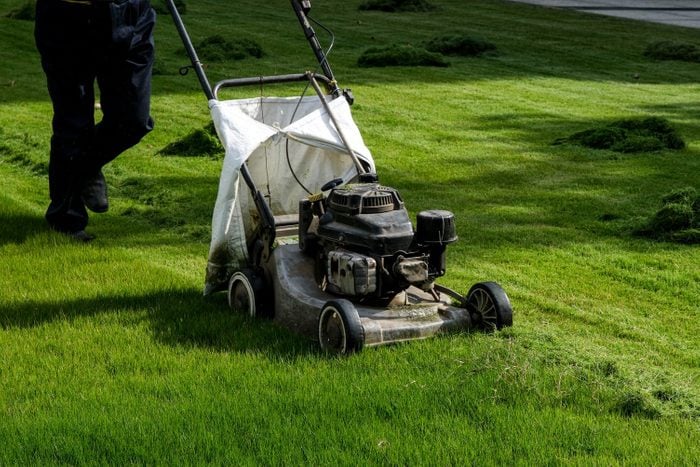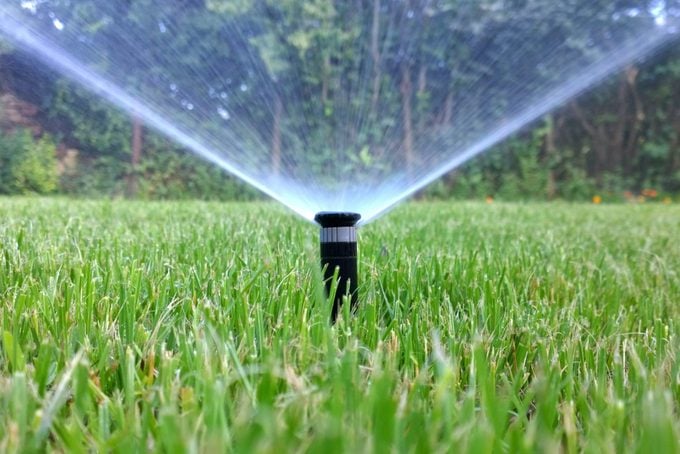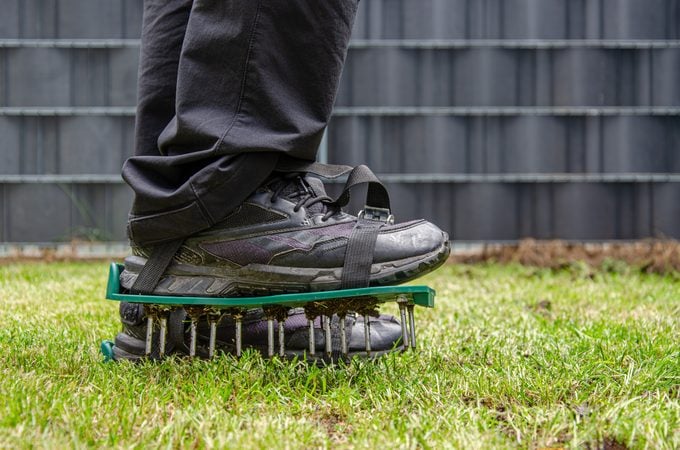How to Keep Grass Green and Achieve a Healthy Lawn
Updated: Apr. 12, 2024

How to maintain a good-looking lawn with less time and effort.
If you’re an average homeowner (and of course, you’re not!), you spend about 70 hours a year tending to your yard. While you may not realize it, the amount of work you put into your lawn is less important than when and how you do it. As I’ve learned from years of yard maintenance experience, the key to a green lawn is keeping it healthy. A healthy lawn is more resilient to disease, stress and pests. It has strong root systems that can absorb nutrients and water from the soil. Plus, dense, thick grass prevents weeds from taking hold, all essential to a perfectly verdant lawn.
This article focuses on northern or cool-climate grasses, but most of the information applies to warm-climate grasses, too. Keep reading for expert tips from two industry pros, Osmar Castillero from Blades Landscaping and Matt Cameron from CMS Landscaping, on how to achieve a healthy lawn.
On This Page
How to Achieve a Healthy Lawn
Follow these tips for a green, healthy lawn year after year.
Adjust your cutting height to the time of year.
The best height to cut grass depends on the type of grass, the region and the time of year. “Blade height is very important,” Castillero says. He adjusts his blade height throughout the season, depending on the temperatures.
“In the spring I have my blades set at three inches,” he says. As the summer temperatures heat up, he raises his blades to 3 1/2 to 4-inches, because longer grass is “less likely to burn,” he says.
For warm-climate grasses, these heights will be about a 1/2 in. lower.
Use a sharp mower blade to cut your grass.
A well-maintained, sharp and balanced blade cuts grass cleanly and evenly. A dull one tears grass instead, making it vulnerable to disease. Sharpening and balancing a blade three times a year is usually enough to maintain a good cutting edge — unless you hit lots of rocks.
A good way to tell if your blade needs sharpening is to look at your grass. “If the top of the grass is torn, split and starting to turn yellow, it’s time to sharpen your blades,” Castillero says.
Prioritize regular, long waterings of your lawn.

Regular longer waterings are more effective in encouraging deep root systems than frequent short waterings.
According to Castillero, aim to give your lawn an inch of water a week. Measure the amount of water applied to your lawn using a rain gauge or a pan set onto the grass. You may need to water up to two inches depending on the temperature, type of grass and soil conditions.
The best time of day to water is early morning. Less water is lost to evaporation and your lawn has plenty of time to dry out before nightfall.
Mow only the top one-third of the grass blade (and don’t rake up the clippings).
The top one-third of a blade of grass is thin and “leafy.” This part of the grass decomposes quickly when cut and can contribute up to one-third of the nitrogen your lawn needs. Cameron says that when you regularly cut your lawn, don’t bag clippings, as they can be a good source of recycled nutrients.
He also recommends the “1/3 Rule,” which is only to cut the top third of grass blades. Cutting more than this shocks grassroots and exposes stems, which tend to burn in direct sunlight.
Schedule fertilizing and weed treatments for your grass at peak times.
Weed killers and fertilizers help ensure your lawn is weed-free throughout the season. Here are a few general guidelines:
- Attack weeds in the early spring and summer. “Early spring is when to put down pre-emergent weed treatments,” Castillero says, “before weeds have a chance to start growing.”
- Fertilize in early spring to jump-start grass root development.
- Read product directions carefully. Some chemicals work only in the presence of moisture; other chemicals are rendered useless by water. Heed the safety warnings too.
Aerate your lawn in the fall.

Aerating — the process of removing small plugs of soil — has several benefits. It improves air-to-soil interaction, facilitates deeper water and fertilizer penetration in the soil and reduces soil compaction for improved root growth. “Aerating is one of the best [lawn] practices you can perform,” Cameron says.” The best tool for this task is a gas-powered aerator, available at most rental centers.
Again, timing is critical. You can aerate in the spring, but fall is the optimal time. “A great time to aerate is in October,” Castillero says.
FAQ’s
Are mushrooms a sign of a healthy lawn?
No. Mushrooms may be a sign of improper drainage, compacted soil or a nutrient imbalance in your lawn. “You might be watering too early and too much,” Castillero says, “It doesn’t destroy your lawn, it just doesn’t look good.”
Is clover a sign of a healthy lawn?
Sure! If clover is desired in your lawn, it can help provide nitrogen to the soil while being a drought-resistant, low-maintenance source of greenery. However, clover can be an unwanted addition if you want a strictly grass lawn. Still, its presence doesn’t mean your lawn is unhealthy.
Are crickets a sign of a healthy lawn?
It depends. Common field crickets, found throughout North America, can signal a healthy lawn as they eat weed seeds and return organic material to lawns. Mole crickets, however, are a lawn pest found throughout the coastal southern United States. This type of cricket feeds on grassroots and can cause major lawn damage.
About the Experts
Osmar Castillero is the owner of Blades Landscaping Services, a lawn care and maintenance company in Lowell, Massachusetts. He has over 10 years experience in the industry.
Matt Cameron is the owner of CMS Landscaping, a full-service lawn care and irrigation company in Holyoke, Massachusetts. Matt has 15 years of landscaping experience.
